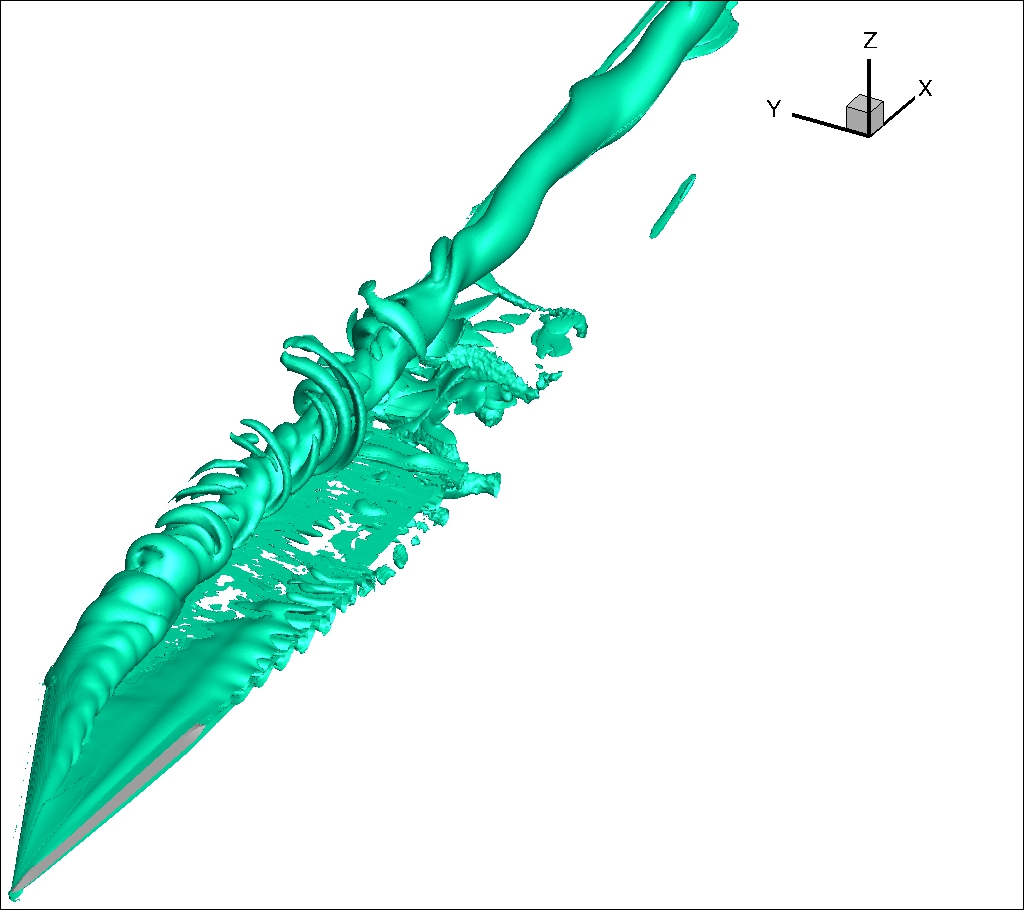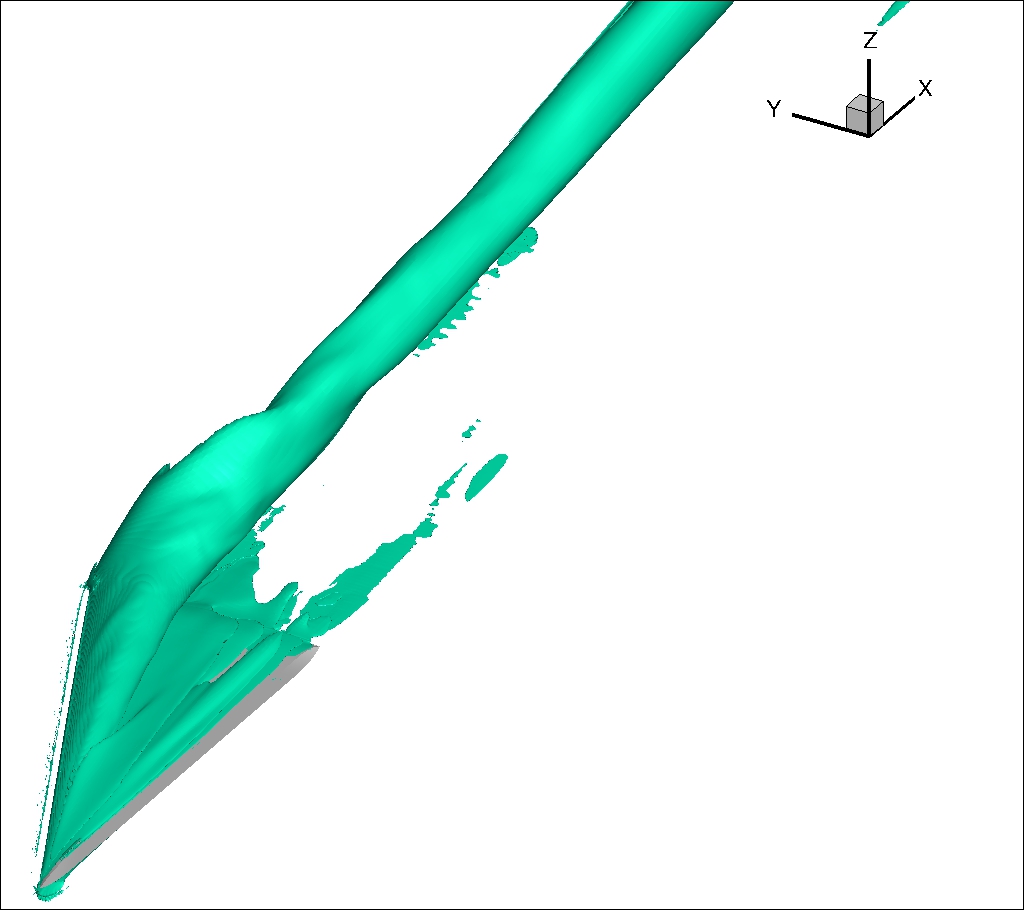Numerical Study of Longitudinal Vortices
Institut für Strömungsmechanik, Technische Universität Braunschweig
(Institute for Fluid Mechanics, Technical University Braunschweig)
Supervisor: Tim Landa
Abstract: This study performs numerical simulation of longitudinal vortices generated by slender delta wings using new Reynolds Stress Models for turbulence modeling. Various simulations are performed by varying the sweep angle and angle of attack while recording the vortex characteristics which include maximum vorticity, circulation, core velocity deficit and diameter of vortex. The trends for these values with respect to sweep angle, angle of attack and distance behind the wing are reported. These trends will be used further in the project to design a chine to generate a strake vortex over a commercial high-lift configuration wing.


Iso-surfaces with Vorticity=5000 s-1 showing instantaneous vortex structures (left) and the averaged longitudinal vortex (right)
Approach and Challenges
Modular Grid Generation
One of the biggest challenge was generating a grid to accurately capture the vortex and at the same time minimize
the computational costs. After multiple attempts at using a universal grid for all angles of attack (α) I developed
a modular grid structure to generate customized grids for each case that would give quick and accurate results.
The modules making up the grid can be seen in the image below. Module 1 is the grid around the Delta wing itself.
Module 2 is a transition for module 3, and modules 2 and 3 together capture the vortex. For different α only
module 2 had to be regenerated and module 3's angle changed. Total time required for grid generation for each case
dropped from about 2 hours initially to 30 mins with only 5 minutes of user commands.
The process can also be automated using macros, but this was not necessary for the number of grids was not large.
Modular grid structure applied for generating more accurate and efficient grids.
Unsteady flow numerical simulation
One of the known problems with RSM models is
that it is difficult to get stable, converged solutions. Moreover RSM turbulence models tend to capture more detail in
the flow than most other commonly used turbulence models. While more detail was the intent of using a RSM model, this
meant that initially when RSM model was used with steady flow, the solution did not satisfactorily converge because
of the trailing edge Von Karman vortex street. This indicated that an unstable simulation with a
time-averaged result would be required to accurately capture the vortex. Unsteady simulation posed a new challenge,
that of the time required to generate solutions.
The solver was run on a cluster in Berlin that had a 12 hr time limit for all jobs. Our simulations, with optimal use
of number of processors, took somewhere between 60-72 hrs to complete. In order to restart the simulation, my advisor
said I would have to manually enter the command; effectively taking the time required to generate each solution to 5 days.
Since there was limited time for this project, running simulations manually would guarantee that the project would not be
complete in time.
At this point, I decided to look into automating the process of queuing a job on the cluster. I used the internet to
learn basics of BASH script and developed a script to have every task trigger the next upon its completion. I took this
a step further by programming it such that once one simulation is complete, it would also start the next simulation.
This automation using BASH script, along with some ingenious coding already built-into the solver DLR TAU, ensured that the
project could be completed.
For results, conclusions and other details please refer to the Project Report.